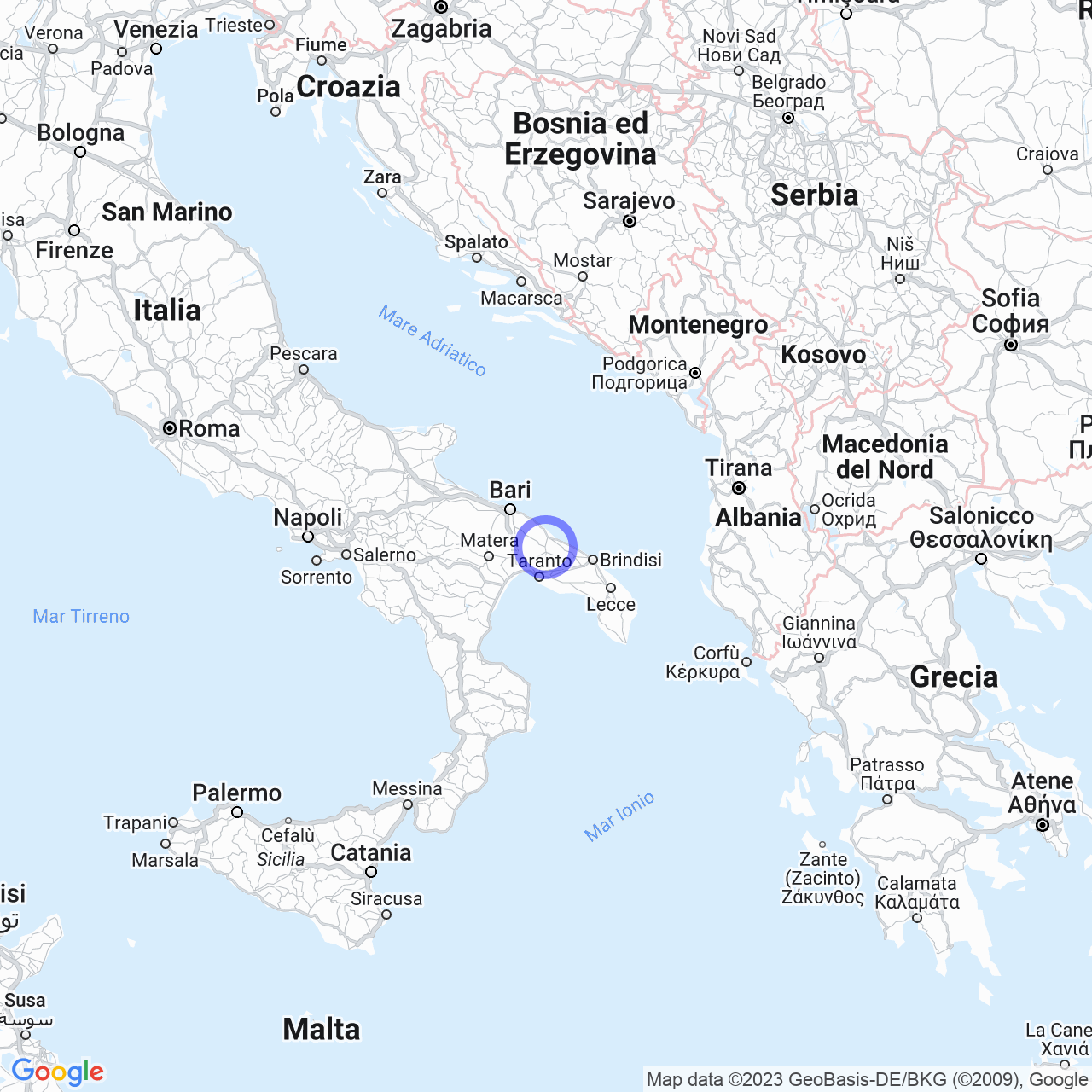Locorotondo
Welcome to Locorotondo: between history, nature and traditions
Welcome to Locorotondo, one of the most beautiful towns in Puglia. You'll discover the history, geography, and climate of this stunning center that overlooks the Itria Valley. The name of this city, "U Curdùnne" in the local dialect, refers to the characteristic shape of the historic center, a collection of small white houses arranged in concentric circles, but also to the hypothesis that there is a link with the late Latin "Locus Rotundus". In any case, the result is a spectacle for the eyes.
Physical geography
Locorotondo is located in the southern part of the Murge plateau, at 410 meters above sea level, in the Itria Valley or "Murgia of Trulli". This valley is a karstic depression formed by two lithostratigraphic units called Fasano limestone and Ostuni limestone. The morphology presents valleys ("polje"), low hills, caves and dolines. Agricultural work has shaped the landscape of Locorotondo, where 13% of the agricultural area is dedicated to viticulture, and the rest to cereal cultivation and olive groves.
Locorotondo has more than 150 villages or traces of agricultural communities that gather around trulli, near churches, wells, and squares. The climate of Locorotondo is presented in an intermediate range between Mediterranean and continental. Winters are moderately cold, summers are hot and dry, and regarding rainfall, it is one of the rainiest localities in central-southern Puglia.

History
Archaeological evidence shows that the Locorotondo area was inhabited as early as the 3rd millennium BC. The first settlement dates back to the period between the 9th and 7th centuries BC, perhaps the Greek colonization of Ancient Greece Locri. In 1195, during the Hohenstaufen domination, the first mention of "Rotondo" or "circular hamlet" appears around the church of San Giorgio, belonging to the fiefdom of the Santo Stefano monastery. The inhabitants sought on several occasions to escape the jurisdiction of the monastery, which happened in 1385, when it became a possession of the Orsini del Balzo family.
Culture and traditions
Locorotondo is a lively and welcoming city where traditions and culture have been preserved over time. The patronal festival of San Giorgio, held on April 23rd, is the most important event of the year, accompanied by processions, concerts, and fireworks. The old village with its white houses, cobbled streets, and squares is a real spectacle, and has been used as a location for numerous cinematic productions.
What to do in Locorotondo
Locorotondo is a town suitable for everyone, with its beauty and atmosphere. You can stroll through its historic center admiring the circular white houses and visiting the church of San Giorgio. The "don Salvatore Lorusso" Territorial Museum is an option for those who want to know more about the history and traditions of Locorotondo. The town's social winery is another treasure, a flag of local viticulture. You can also take excursions in the surrounding areas, discovering the trulli of Alberobello and other towns in the Itria Valley.
Local cuisine
In Locorotondo, you'll find a cuisine rich in flavors and scents, the result of peasant tradition and varied agricultural production. Among the typical dishes are sausage, bombetta (veal meat stuffed with cheese or bacon), orecchiette with turnip greens, braciole in tomato sauce, stewed green beans, and Crusceddu bread. The Primitivo di Locorotondo is the symbol of the Itria Valley's wine, characterized by a pronounced acidity and ruby red color.
Conclusions
In conclusion, Locorotondo is a treasure to visit, where history, nature, and traditions come together in a magical atmosphere. The historic center with its white houses, the hilly landscape of the Itria Valley, and the local gastronomic specialties will leave you with an unforgettable memory. Come to discover Locorotondo and let this small town capture your heart forever.
